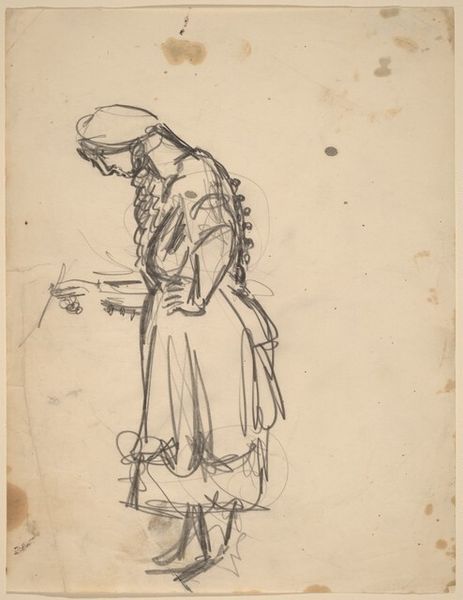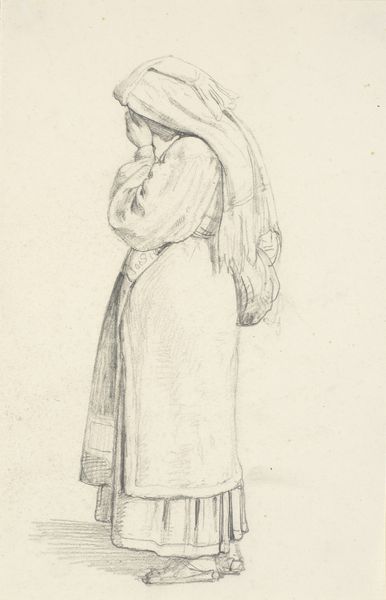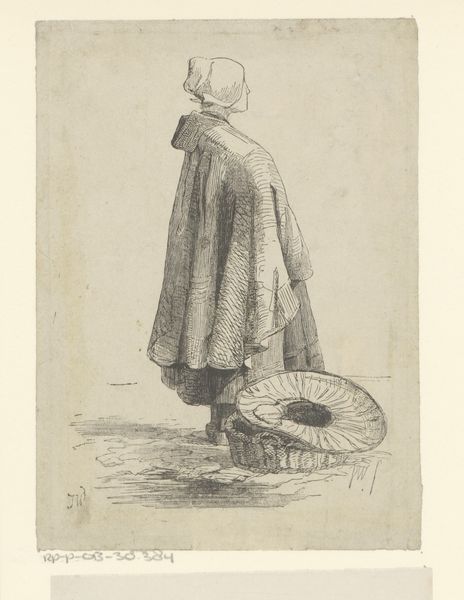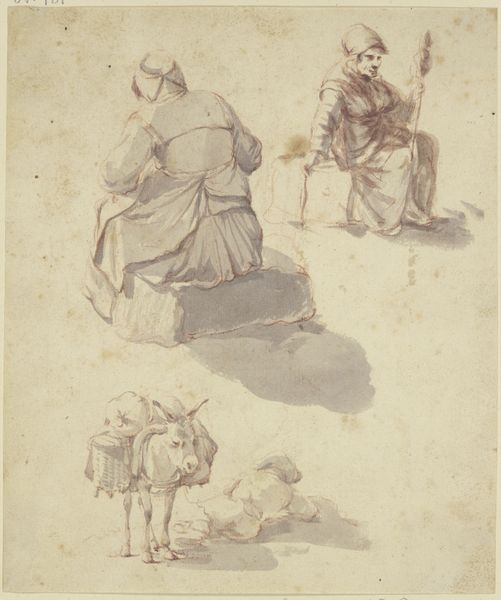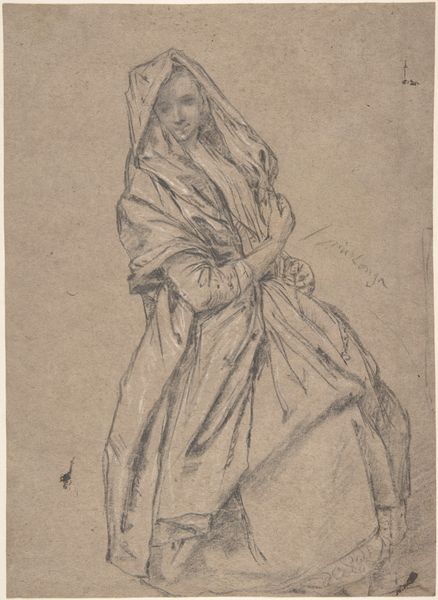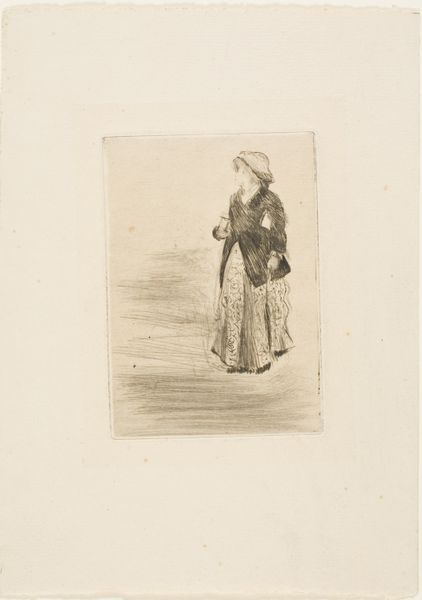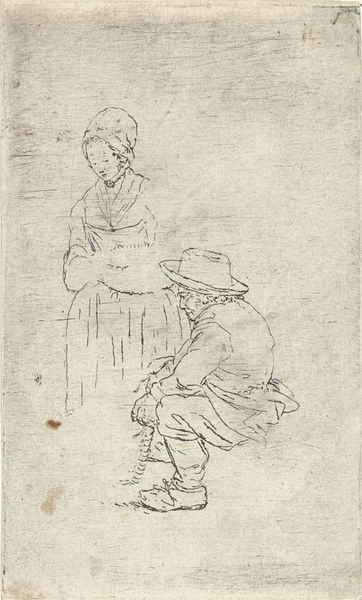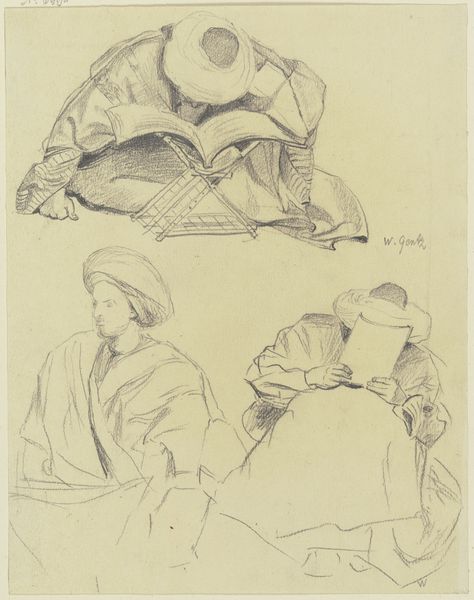
Copyright: Public Domain: Artvee
Curator: Here we have Max Liebermann’s drawing, "Strickende Mädchen," dating from around 1895. He created it using pencil and graphite. What strikes you most about this drawing? Editor: Immediately, the overwhelming sense of subdued concentration—almost a quiet solemnity, even though it's just two young girls knitting. The composition, with its minimalist background, heightens this effect. Curator: That quiet intensity seems fitting. Liebermann often depicted scenes of labor and leisure within working-class communities, exploring their everyday lives with an honest, unsentimental eye. Editor: True, but look at the texture. The varying pencil strokes build form and volume so efficiently. The hatching on the dresses creates a remarkable sense of depth and light. There’s a real tension between the sketchy quality and the defined details. Curator: Liebermann's work fits into the broader European art scene that responded to industrialization and urbanization by turning attention to social realities. He participated in an avant-garde movement to represent modern life as truthfully as possible. Editor: Yes, and he does capture the figures naturally, not overly idealized, caught in the midst of ordinary labor. It reflects an engagement with realism, no doubt. Still, my focus returns to that tonal range Liebermann achieves through the density of his pencil strokes; it lends an almost sculptural presence to the girls. Curator: Precisely, though we should remember that during this period the professionalization of female domestic work also began. These girls knitting represented not only leisurely craftwork, but essential contributors to familial economy. Knitting became more than just an occupation. It stood for an active contribution in providing clothes, nets and much more. Editor: That context deepens our understanding. The act of knitting is then not merely representation. Still, as an artist, Liebermann displays keen observation to achieve this powerful drawing through masterful command of pencil. Curator: And in doing so, Liebermann contributes to visual history. Editor: Quite, and offers a masterclass of technical precision.
Comments
No comments
Be the first to comment and join the conversation on the ultimate creative platform.
